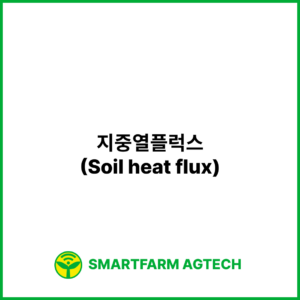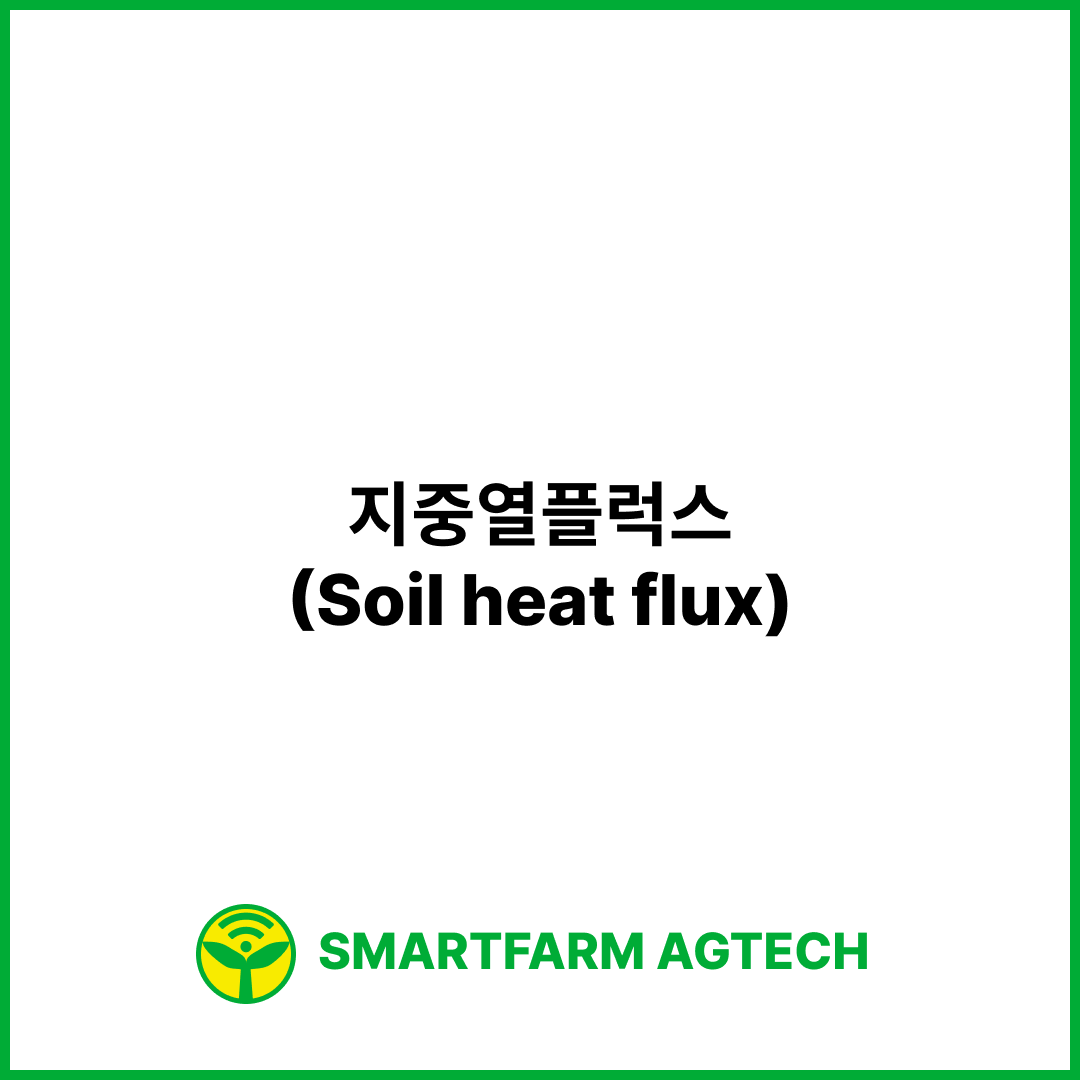지중열플럭스(Soil heat flux) | 스마트팜피디아 (Smartfarm Pedia)는 스마트농업관리사 혹은 스마트농업전문가라면 알아야 할 내용 중에 하나입니다. 자세한 내용은 아래의 내용을 통해 확인해보시기 바랍니다.
지중열플럭스(Soil heat flux) | 스마트팜피디아 (Smartfarm Pedia)
지중열플럭스(Soil heat flux)

지중열플럭스는 토양에서 발생하는 열의 흐름을 나타냅니다. 이는 열전도를 통해 토양 내에서 이루어지는 열전달을 의미합니다. 일반적으로 낮에는 열플럭스는 토양으로 향하며 지하로 이동합니다. 그러나 밤에는 이 방향이 반대로 바뀌어 열이 토양 속에서 지표면으로 상승합니다.
지중열플럭스는 지구의 에너지 균형에서 중요한 부분을 차지하며 다양한 환경 과정과 농업 활동에 영향을 미칩니다. 지중열플럭스 패턴을 이해하는 것은 생태계를 관리하고 농업 활동을 최적화하는 데 필수적입니다. 특히 온도 조절과 작물 성장과 관련된 맥락에서 매우 중요합니다.
지중열플럭스를 모니터링함으로써 토양의 열 역학을 이해할 수 있으며, 이는 식물 재배, 토양 이용 및 환경 보전 노력과 관련된 결정을 내릴 때 도움이 됩니다. 이러한 열플럭스 패턴을 이해함으로써 전문가들은 더 효과적인 토양 및 물 관리 전략을 설계할 수 있습니다. 이를 통해 지속 가능한 농업 활동과 생태학적 균형을 보장합니다.
Soil heat flux
Soil heat flux refers to the flow of heat into or out of the soil, which occurs through thermal conduction. This heat transfer within the soil is known as soil heat flux. During the day, the heat flux typically moves downward into the ground. However, during the night, this direction reverses, and heat moves upward from the soil layers to the surface.
Soil heat flux is a vital component of the Earth’s energy balance, influencing various environmental processes and agricultural practices. Understanding soil heat flux patterns is crucial for managing ecosystems and optimizing agricultural activities, especially in the context of temperature regulation and plant growth.
Monitoring soil heat flux provides valuable insights into the thermal dynamics of the soil, helping scientists and agriculturists make informed decisions related to crop cultivation, land use, and environmental conservation efforts. By comprehending these heat flux patterns, experts can design more effective strategies for soil and water management, ensuring sustainable agricultural practices and ecological balance.
참고)
- 스마트팜피디아 SMARTFARMPEDIA – 바로찾는 스마트팜 용어집 (발간등록번호 11-1543000-003389-0

